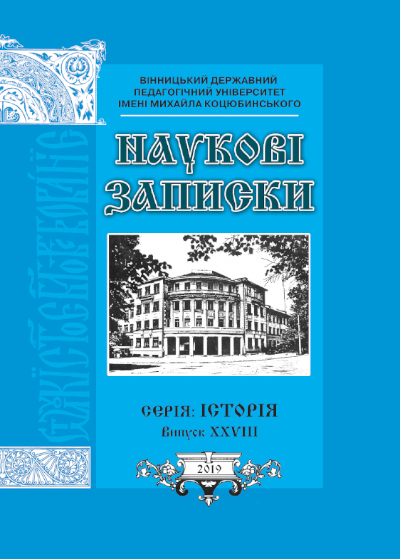Abstract
The article analyzes the course of the battle between the Russian and Austro-Hungarian cavalry near Gorodok in August 1914, the features of the use of the Austro-Hungarian and Russian troops in it based on the analysis of a complex of sources and literature. It is concluded that sources and literature as a whole make it possible to investigate the course and results of this battle.
At the same time, it is noted that the work of E. Tihotsky remains the only relatively complete source, revealing the course of the battle near Gorodok. The conditions of its holding, the organization and quality of the troops of the opposing sides, the level of their combat training are analyzed. The organization of parts of the Austro-Hungarian and Russian cavalry was investigated, some of its differences were noted, precisely by the possibilities of fire support and technical support.
The main participants of the battle were the 2nd Combined Cossack Division from the Russian side and the 5th Austro-Hungarian Equestrian Division. The tasks that were set before the troops of the opposing sides are indicated. Russian cavalry covered the deployment of the Russian armies, and the Austro-Hungarian cavalry conducted deep reconnaissance.
During the battle it became clear that the success of the Russian side was due to the concerted actions of the infantry, artillery and cavalry. The Cossack cavalry attack was successful due to the fact that they attacked with an open system (lava), which enabled them to cover the flanks of the Austrians and penetrate into the intervals, surrounding individual groups of hussars, which led to fierce hand-to-hand combat.
The circumstances of the success of the Russian side in this battle are determined.
References
Белой А. Галицийская битва. М. 1929.
Брусилов А. Мои воспоминания: Воспоминания. Мемуары. Мн.: Харвест, 2003. 432 с.
Залесский К. Первая мировая война. Биографический энциклопедический словарь. М.: Вече, 2000. 576 с.
Залесский К. Кто был кто в Первой мировой войне. М.: ООО „Издательство АСТ”: ООО „Издательство Астрель”, 2003. 894 с.
Керсновский А. История Русской Армии. М.: Воениздат, 1999. Т. 3. 318 с.
Корниш Н. Русская армия 1914–1918. М.: АСТ: Астрель, 2006. 69 с.
Летопись войны 1914–1917 гг. [Пг.], [Еженедельник]. Вып. 1–132. Ред.-изд. Д. Дубенский. Репринтное издание. Кн. 7. Вып. 31–35 (489–568 с.) Х.: Издательство САГА, 2008. 2, 104 с.
Ненахов Ю. Кавалерия на полях сражений ХХ века: 1900-1920 гг. / Ю.Ю. Ненахов. Мн.: Харвест, 2004. 512 с.
Рубец И. Конные атаки Российской Императорской Кавалерии в первую мировую войну // Военная быль, 1964. № 68. С. 15–18.
Рыжкова Н. Донское казачество в войнах начала ХХ века. М.: Вече, 2008. 448 с.
Оськин М. Крах конного блицкрига. Кавалерия в Первой мировой войне . М.: Яуза: Эксмо, 2009. 448 с.
Тихоцкий Е. Атака Австро-Венгерской Конницы на 2-ю Сводную Казачью Дивизию под м. Городок 4-17 августа 1914 г. Белград, 1930. 25 с.

This work is licensed under a Creative Commons Attribution 4.0 International License.
Copyright (c) 2019 Andrii Naumenko




